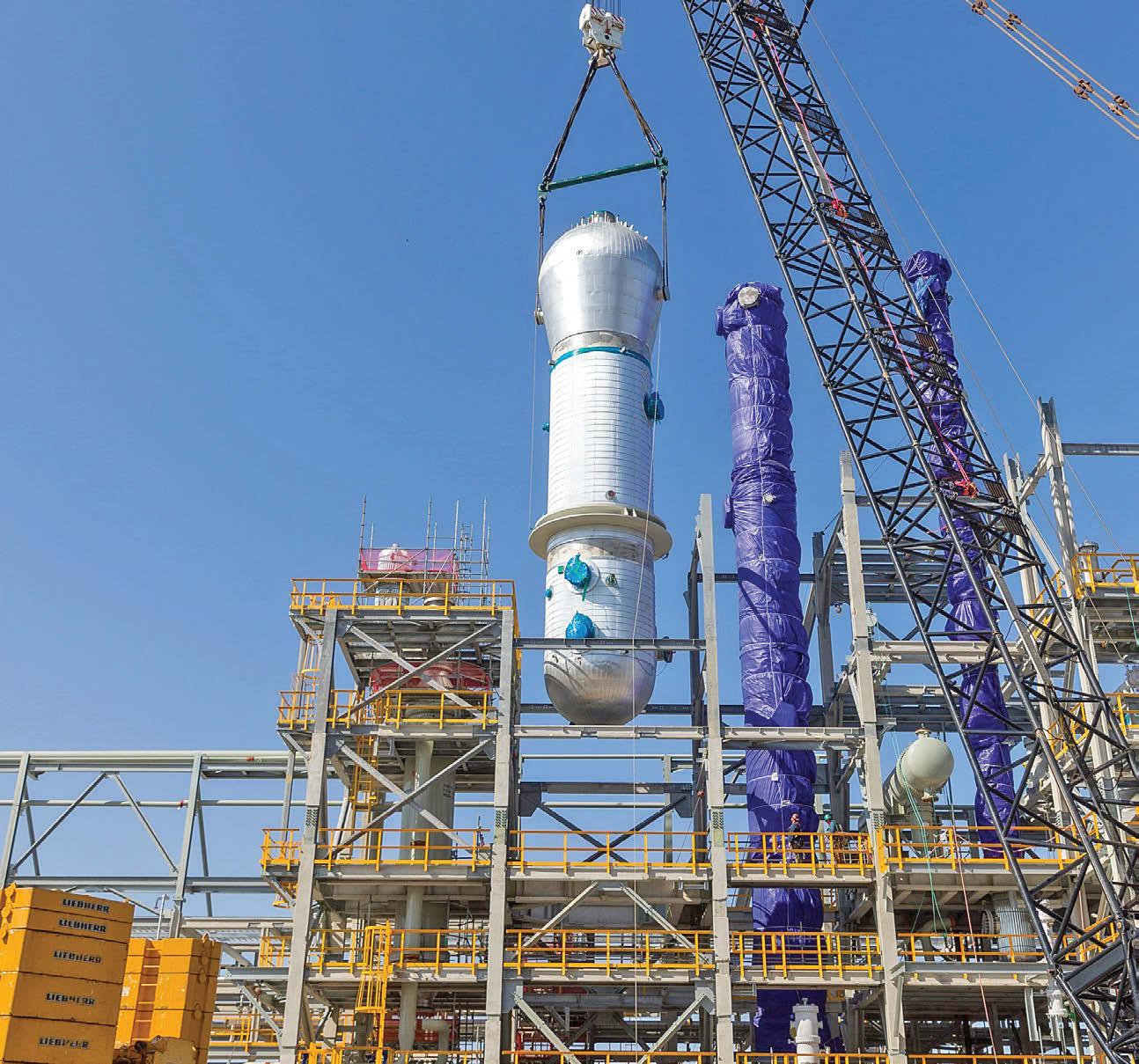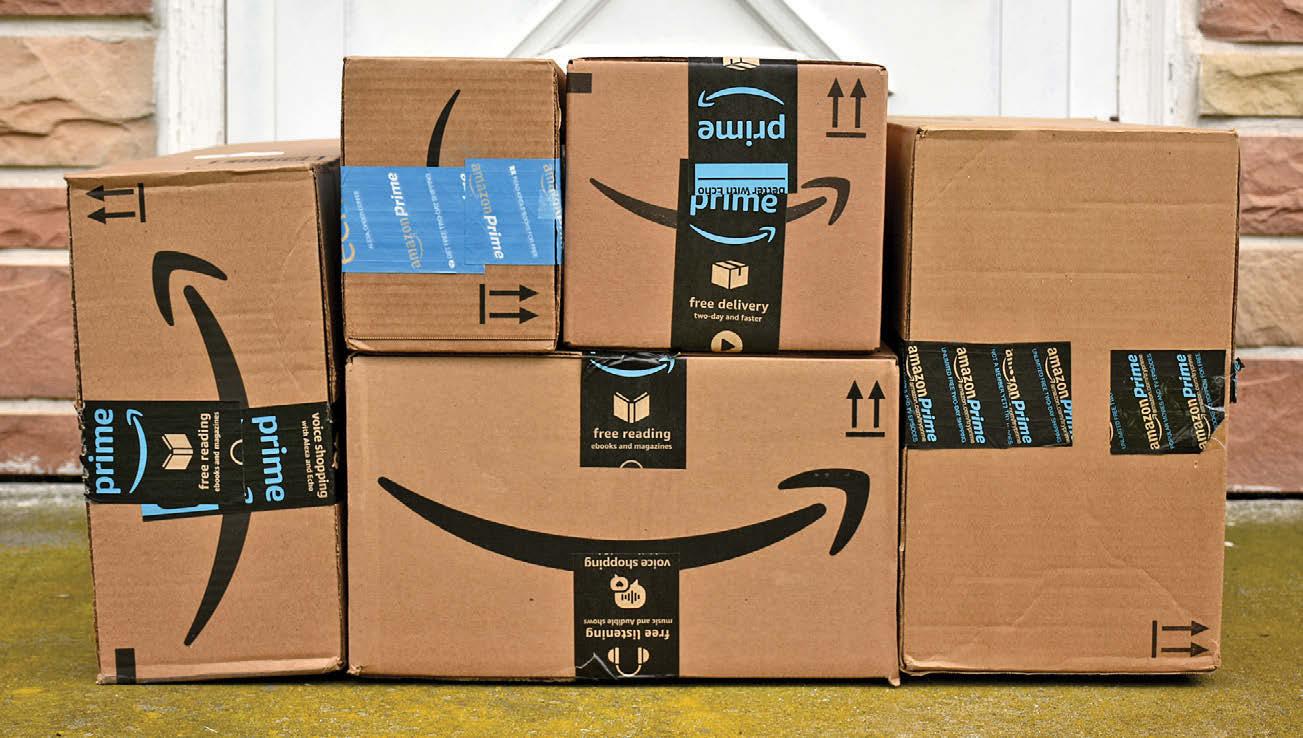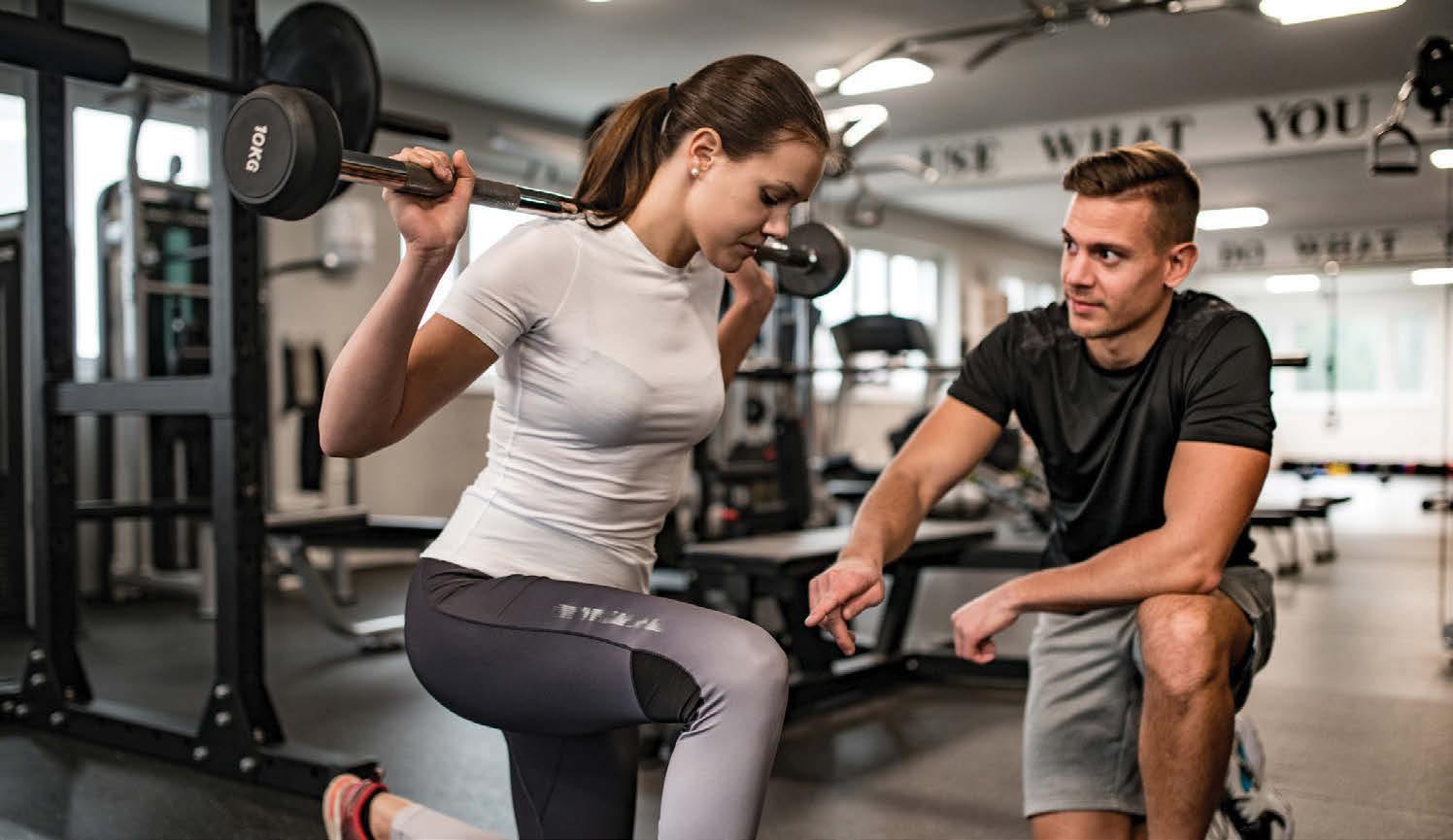
5 minute read
Good as being there
ExxonMobil turns to realistic VR modules to assist with both plant construction and on-site operations. BY SAM BARNES
IT HAS BEEN under development for some time, so chalk up ExxonMobil’s virtual reality training initiative to serendipity. The effort is coming to full maturity in the middle of a pandemic, when remote learning is both necessary and encouraged.
As many as 18 VR-based modules in various stages of development will soon enable ExxonMobil to train workers remotely for its new $500 million polypropylene plant in Baton Rouge. The modules will immerse operators in a computer-generated environment to perform critical tasks, and will simulate a physical presence in a nonphysical world to guide them through various scenarios.
Kenneth Miller, a retired ExxonMobil engineering manager, was asked to help navigate the VR initiative some two years ago. “Of course, we had no idea how important this would become,” Miller says. “During the pandemic, this ability has provided an added value that we didn’t anticipate.”
To get the ball rolling, ExxonMobil tapped into the services of Louisiana Economic Development’s FastStart program, offered by the state as part of a financial incentives package. FastStart, in turn, connected ExxonMobil with eight local tech companies. “It has been a natural fit,” says Paul Helton, FastStart executive director. “We were wanting to get into the VR space, and had tech partners in that space, but we didn’t have a project to pare it with.”
Creating the modules has been a meticulous endeavor, whereby developers collaborate closely with ExxonMobil subject matter experts to develop each component and create a realistic space that precisely mimics reality. Some 50 to 60 plant personnel have been involved throughout the process.
INDUSTRIAL TECH: Cody Louviere, founder of tech company King Crow Studios in Baton Rouge, demonstrates the virtual reality technology his company helped develop with ExxonMobil to enhance the industrial giant’s training operations.
manufacturing manager at ExxonMobil, says he initially resisted VR but has since learned that workers engaged in an immersive learning environment benefit from a higher rate of retention. Even before completion of the PP facility, employees will be able to wear the VR goggles to train for a task and “it will look just like the built environment,” Wannamaker says. “This is the closest thing to actually doing it in the field that we’ve seen. It bridges the gap between the classroom training and the field.”
It can also help attract a younger generation of worker. The plant has hired some 60 new operators, Wannamaker says, “and they’re very excited and comfortable with the idea of using the technology.” VR has even enabled ExxonMobil to tweak procedures and perform tasks more efficiently.
Cody Louviere, founder of tech company King Crow Studios in Baton Rouge, says VR offers an unprecedented level of immersive learning that allows the user to “go anywhere and do anything.” A small team at King Crow uses various tools and apps to create realistic representations of steel, concrete and other materials within the modules. “It appears exactly as it does in the real world,” Louviere says. “When they put the headset on, they are immediately in their environment.”
VR incorporates visualization, sound and muscle memory into the training process. By the time a worker is actually performing a task, their body has already experienced it. “It’s like you’ve done it before in a past life,” he adds. “That’s something that your brain retains.”
Wannamaker agrees. “It’s a crossover between training and experience. You’re actually gaining experience while being trained.”
The cost of VR technology has dropped significantly since tethered headsets first entered the commercial market nearly 10 years ago, and the headsets have become easier to use. Louviere expects that trend to continue. In fact, King Crow must change its platform once a year to respond to the release of a new headset that has greater capabilities.
One significant recent development—headsets are no longer confined to a designated VR-enabled space, but can be used anywhere. That’s because all of the necessary technology is built into the headset itself, “and it knows exactly where I am, how tall I am, etc. It creates the environment wherever I am,” Louviere says.
VR is applicable to a construction setting as well. Pixel Dash Studios of Baton Rouge helped develop a lift plan module for one of the ExxonMobil reactors, even incorporating a crane into the
virtual space. “You can actually sit in the crane cab and perform the lift, which is something you just can’t do with a 3D model on a computer,” Wannamaker says.
Since the actual reactor was being manufactured in Italy, it saved the project significant time. “The contractor actually participated in the creation of the module,” he adds. “They then used it to plan the lift, and VR allowed them to do the lift before actually doing the lift.”
For this and other reasons, Wannamaker sees growing potential for VR. “If you look at a 3D model on the computer, you can only get about 80 to 90 percent there,” he says, “By going into the model virtually, however, you can see how the equipment is configured, or if you have enough space to work, or if a piece of equipment has enough room, etc. If a question comes up, we can actually go into the model to get the answer.”
Looking ahead, King Crow’s Louviere hopes to grow his business in the industrial space by building on what he’s learned. “In working with ExxonMobil’s subject matter experts, we’ve learned from them and they’ve learned from us,” he adds. “It has been an extraordinarily collaborative endeavor for everyone.”
The ExxonMobil project, and the potential of additional growth in the industrial market, has enabled tech company Top Right Corner of Baton Rouge to hire additional workers. “Our artists and developers have experience in creating games, escape rooms, etc., and their talents were easily transferable to this space,” says owner Dan Cliftion. “FastStart gave us that opportunity.”
ExxonMobil has also partnered with Baton Rouge Community College to support a VR training lab there, where local students are trained on process technology and industry-related scenarios. They’re also planning to use the VR modules at other ExxonMobil sites. “Once finished, these modules will be transferable to other polypropylene sites … Singapore, Baytown, etc. … in places where they’re using the same processes.”
The success of the initiative is getting noticed. LED’s Helton says he gets VR inquiries from other companies nearly every day, “but we have to evaluate them to see if this is the correct training methodology for their application. It’s not always a good fit. At ExxonMobil, there are operations that might be dangerous or might not be available for in-person training … so it was absolutely appropriate.”

REAL WORLD: Virtual reality training was used to prepare the crew prior to the lift of this equipment during construction of an ExxonMobile polypropylene plant.
COURTESY EXXONMOBIL









